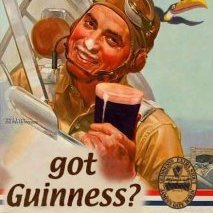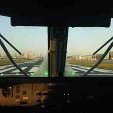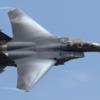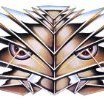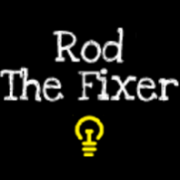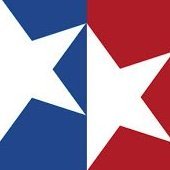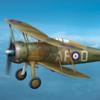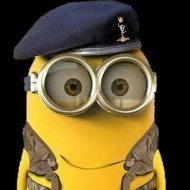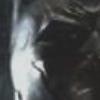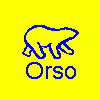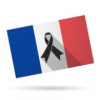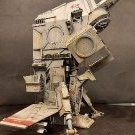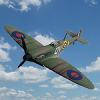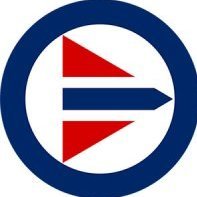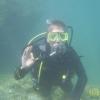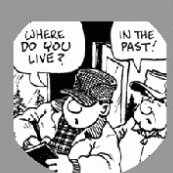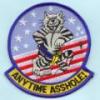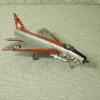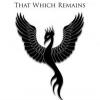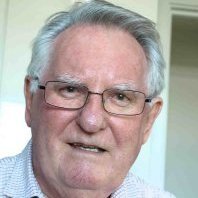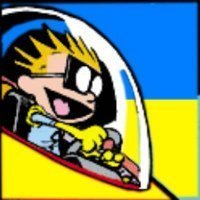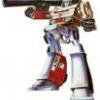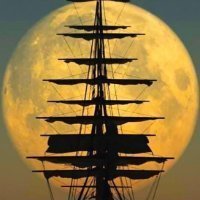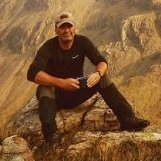Leaderboard
Popular Content
Showing content with the highest reputation on 05/10/21 in all areas
-
This is the Italeri 1/72 UH-1B dressed in DekLs delivery scheme markings. Finished in just under 2 weeks it was a nice change to build something OOB rather than my usual major kit bashing. I very different scheme for a RAAF Iroquois prior to going green.29 points
-
A while ago I started 4 F-104 kits at the same time, this sounded like a good idea back then. Unfortunately I couldn't keep the mojo for this foursome and they were destined for the shelf of doom. They are all Hasegawa F-104 kits with one being the Eduard boxing. They are all machines of the Royal Netherlands air force, in two different camouflage schemes and three different roles. Two will be grey, the early 60's scheme and two in the final camouflage scheme. Two trainers, one reconnaissance and one air defence QRA machine. They are all supplemented with a mix of Eduard and True Details C2 seats, Master pitot tubes, Eduard wheels and wing rocket pylons on the grey dual, and for the grey QRA machine also Eduard rocket launcher and sidewinders. Also, the reconnaissance RF-104 is upgraded with the DACO F-104 set with the smooth wings and Orpheus pod. Also on all there is canopy tubing from DACO and CMK as well a opened para brake housing on two of them. The decals are a mix of Dutch Decal sheets and stencils sheets of the Dutch Starfighter foundation(DSF decals). The latter becoming a mojo killer for me as they are printed on one big decal sheet you have to cut out yourself and there are a lot of them! Also, they are designed for the camouflaged fighter bomber version so when building one for another role, in grey or a dual its quite a puzzle to place them right. Also for the dual there a lot of differences in the forward fuselage part of course so they have to be sourced elsewhere. Luckily someone from the DSF printed some for me. So this is were it ended a year ago; Luckily the mojo came back and I finally finished the first of the foursome! It's the grey dual from 322/323 squadron in the early 60's. This machine was the QRA trainer for the pilots of 322 and 323 squadron based at Leeuwarden AB. Hope you like it! Full build off the foursome can be seen HERE Erik23 points
-
Hi fellow britmodellers, inspired by a quarter scale Eduard VLR Mustang kit, I took the Airfix kit and modified it to one of Iwo Jima machines. Decals came from georgeous DK Decal sheet. The mods featured some scribing, making new antennae masts setup and borrowing the 165 US gal tanks from a P-38 kit along with some scratch building for their sway braces etc. Painted with Mr. Color SM range. Cheers. Libor22 points
-
Hello all, Well another build complete and this time it's Revells lovely Halifax released in 2011. Built using the kits scheme of an aircraft based at RAF Topcliffe with the Royal Canadian Air Force in July 1942. Having previously completed their B Mk III kit, I was aware of various short comings with this tooling and set about correcting these. The AML resin update set was used for the spinners and air intakes, the exhausts and air vents on the sides of the engines are courtesy of Quickboost and while this doesn't solve the chunkiness of the nacelles, it improves the look. I opted to forgo the AML prop blades and instead made modifications to the kits paddle props to reduce the size of the tips. Lastly, the dorsal turret seemed to sit too high, so this was allowed to sit considerably lower. Only other aftermarket used was the obligatory Eduard mask set to make my life easier. The main wheels were also sanded to give the weight on effect. Painted using Tamiya acrylics and weathered with a variety of washes and oils. I have yet to add any chipping and kept the weathering quite subtle compared to some of my other builds. it is pictured below alongside vehicles from the Airfix RAF Resupply set aswell as Zvezda's new tooled snap fit Hawker Hurricane MK.IIC built from the box to complement the scene (a very nice build aswell by the way...) As with all my builds, I have tried to create a historically accurate representation of the real aircraft and the Haynes Halifax build manual was invaluable.22 points
-
The latest off of a very slow production line is this one from Kinetic. This is without doubt the most challenging builds that I have taken on in quite a while. The kit had several short shot parts, very few others that actually fitted without a lot of tinkering and truly sucked the fun out of modelling on several occasions. However it's done and I think I've earned my 'I took on the Kinetic Intruder and won' badge. I added the following to the build, one of which added to the challenge but is worth the effort, it being the Wolfpack cockpit set. All in all though I'm pretty pleased with the outcome and glad to have an A-6 in the display cabinet Wolfpack resin - A-6E Tram Cockpit set Master - Pitot tube, AofA probe and refuelling probe Eduard - LAU-10 Rocket Pods Eduard - GBU-16 Bombs Afterburner - Desert Storm Intruders decals Reskit - Resin Wheels As always comments and critique welcomed. Pete21 points
-
A belated RFI for a model finished a few days ago - I was waiting for the rain to stop! The build thread is here if you want to watch the painful process that was this one coming together... Anyway, here she is - any comments/criticism are welcomed👍 I will hopefully get some more photos added tomorrow, showing some close ups...20 points
-
In this model, fabricated: -Pilot and operator cabs, -Propellers, -Nishties, struts, struts, wheels and landing gear flaps, -Imitation of wing mechanisation, -Rocket rails, -Light landing lights, -Keel BANO, -All kinds of antennas, -Exhaust nozzles. Of the modifications: -Cockpit lights, -BANO, -Burner, -miscellaneous air intakes, -Radar, -Cab, -Deflector hinges and linkages. Painting and lacquering with brushes. Paints: GSI Mr.Color and Mr.MetallColor urethane-acrylic, PC88 acrylic, Tamiya lacquer, futura, +plain pencil. Enjoy the view!13 points
-
Hi all, this Dora wings kit recreate the Savoia-Marchetti S.55, called "Santa Maria" which was flown by the italian aviator Francesco de Pinedo (February 16, 1890 – September 2, 1933), in 1927, with Carlo Del Prete and the engineer Vitale Zacchetti , from Elmas (Sardinia, Italy) to Arizona. I hope you enjoy it 😉 Click below for the WIP by Rodolfo Masti, on Flickr by Rodolfo Masti, on Flickr by Rodolfo Masti, on Flickr by Rodolfo Masti, on Flickr by Rodolfo Masti, on Flickr by Rodolfo Masti, on Flickr13 points
-
Hello everybody … Im going to say thanks to everyone hosting and everyone that stopped by my build thread. Id like to add that this is a decent kit and would love to get a couple more to do the more traditional marking's. Please feel free to visit and leave a comment or ask questions in my build thread. https://www.britmodeller.com/forums/index.php?/topic/235097770-its-a-520-…-dewoitine-520/page/2/&tab=comments#comment-4207199 Dennis11 points
-
For a nearly 50 year old tooling the, Airfix Do 17E is still quite nice. Needed to do a bit about the spartan interior though, and the miscast bomb aimer's window was replaced with a home-vac. Aftermarket decals are from LF models. Cheers, Luka10 points
-
Hello everyone I've just finished my pair of Airfix Mitchells, so thought I'd post some piccies. I didn't intend to build two, it just sort of got out of hand a bit. As happens, you know... I've been doing a W.i.P. thread, and the following intro is copied from it: Both these Mitchells were flown by Edward 'Ted' Burn D.F.M., from Alnwick in Northumberland, so another local connection. He was involved in the following two incidents in these Mitchells: On August 6th 1944 he was flying FW199, and from the 180 Sqn ORB Form 540: In the morning eleven aircraft took part in a medium level bombing attack on an ammunition dump at LIVAROT and in the evening eleven aircraft attacked a concentration of enemy tanks at T.985412 in Northern France. Mitchell FW199 returning from the latter raid was hit by flak and had to make a forced landing at B.7 – 123 Wing in Normandy. The crew, all unhurt, were as follows: 1672857 Sgt. Burn, E. Pilot, 154612 P/O A.C. Kirk, Nav.B Aus419507 Sgt C.V. Smith, WO(AIR), and 1250048 Sgt. Freeman, J.R. Air Gunner. On August 9th 1944 he was the pilot of FL210: This morning eleven aircraft went on a bombing mission to an ammunition dump at Foret de Lyons. Intense accurate flak was encountered and casualties were sustained. In the Mitchell FL210 the Pilot and Navigator were wounded on the way to the Target, they made every endeavour to catch up on the formation and carry on with the job, but as the navigator was fast losing blood they had to turn for home and made an emergency landing at HARTFORD BRIDGE where the Navigator, P/O A.C. Kirk was taken to hospital and his left leg amputated. The pilot, Sgt E. Burn suffered only minor injury while the others Sgt. G.V. Smith (WO/Air) and Sgt J.E. Freeman (Air Gunner) were uninjured. Ted would fly some 43 Ops with 180 Sqn, and was awarded the D.F.M. in April 1945. However, his R.A.F. career had been brought to an abrupt halt in very odd, almost tragic, cirumstances in late 1944. From the ORB Form 540, December 3rd 1944: 1672857 F/Sgt BURN E. resting in his room was shot in the head when a revolver was accidentally discharged in an adjoining room. He was instantly removed to hospital and placed on the dangerously ill list. An investigation was ordered. Apparently another airman had just got a photo of his sweetheart, and wanted to pin it on the wall. Rather than using a hammer, or even his shoe, he decided to use his revolver, which went off and the bullet passed through the wall, hitting Ted Burn. He was taken to hospital, and somehow survived, although he lost the use of his left arm and leg. He died in 1990, as reported in the Newcastle Journal, April 14th 1990: Wartime pilot dies after heart attack Wartime pilot from the region has died suddenly at the age of 67. Mr. Ted Burn, of Branding Court, Jesmond, Newcastle, died in Newcastle General Hospital after suffering a heart attack. Mr. Burn, who won the Distinguished Flying Medal, survived a head wound caused by a gun injury to go on to careers in business and the civil service. Born in Alnwick, he joined the RAF in 1942. Two years later, he was injured when a fellow serviceman accidentally shot him. Mr. Burn who was left with a bullet lodged in his head, made a remarkable recovery, despite losing the use of his left arm and leg. ------------------------------------------------------------------------------------------------------------------------------------------------------------ So that's the intro, and the build has been interesting, to say the least. I can safely say I know much more about the Mitchell than I did before starting (which isn't that difficult, to be honest!). The devil is in the detail, and it's been interesting finding out about the foibles of the Mitchell II versions. FL-210 is an early Mitchell II, with the Bendix lower turret, and FW199 is a later version, refitted with an FN64 turret (spare from my Airfix Lancaster II). There are a host of minor detail differences - cockpit and rear fuselage glazing, nose gun, aerial fit, formation lights and wing tip lights in different positions, fuel dump pipes on the nacelle rears, camouflage paint used (Olive Drab 41 and Olive Drab 613) and the roundels on FL-210 are larger than on FW199. FL-210 also had replacement engine cowlings and exhausts fitted at some stage. The Airfix Mitchells have also proved 'interesting' but not always for the right reasons. The kit is really nicely detailed and very cleverly designed, but I have had several issues with the mouldings, with several short-shot parts and some odd moulding artefacts on the parts that made the fit of some of the parts a little 'relaxed' to be polite. The Airfix spares department have been very helpful, and I've also had the benefit of some very helpful posts from @don f on the W.i.P. thread, and some parts I needed were supplied by @vppelt68 both of whom I'm greatly appreciative to. I've also had lots of help from Dave Poissant of the 2nd Tactical Air Force Medium Bombers Association. I've used a few aftermarket bits - I've used photo etch parts for both kits (the Big Ed set for FW199, which has an open bomb bay), plus wheels from CMK for both kits. Decals are a mix of Xtradecal national markings, some of the kit decals and DK Decals 72043 Mitchell set for the serials and codes. I also added some scratch-built detail to the interior of both turrets and the nose interiors, as well as bracing the mainwheel legs. One observation about the two Mitchells - Airfix recommend 25g of weight in the nose. I didn't keep track of how much I put in FW199, but kept a list of the total for FL-210, which ended up having over 40g of ballast added in various parts. Both kits will STILL sit on their tails, given half the chance, and I think it's only the flat bottoms of the CMK weighted wheels that help them balance on the nose gear...I guess the weight needs to be as far forward as possible. Anyway, enought prattling, here are the photos (there are some detail photos on the W.I.P. so I'll not re-post them). So, all done and dusted. I think they've been worth all the time, effort and indeed money spent on them...! Cheers Simon10 points
-
Yaaaaay! The MG34's have arrived. I made a start on the front MG position. It's basically made up from four pieces of .5mm card, cut to shape and glued together. Before assembly, I drilled a hole in the front for the gun, and gradually enlarged it with a round file. I don't know how to name this next piece (anyone know what it's called, feel free to tell me). It's the piece which the gun is mounted in and allows it to me swung around. Anyhow, I made it from a length of thick sprue, the same diameter as the hole in the gun position. I chamfered the edges with a sanding stick, and then drilled a hole in the centre ready to accept the gun. The end was cut off and glued into the gun position. I made two of these, as I needed one for the gun in the turret. This will be fitted in place later. Moving on to the turret now. First job was to cut out the base shape from the drawing and tape this to a piece of thick card. This was then cut out and cleaned up. Five pieces of .5mm card were cut and glued to the five positions across the sides and back. Next the front upright piece was cut out, and the off centre hole cut for the MG. Then the two side triangular pieces were cut and and all three pieces were glued into position. A hole was drilled into the roof of the A/C and one into the base of the turret to allow for a thin piece of sprue to be inserted for fixing later. Using the same method as I used to cut out the base of the turret, I cut the roof from 1mm card. This was then glued to a central upright and the two glued into the turret. Once I was happy with the positioning of the roof, side supports were cut and glued in place. I'll be back once I've got all of the sides cut and glued, and the MG's in position. It looks a bit dog rough at the moment, but (hopefully) it'll all come good in the end. Thanks for looking. John.10 points
-
A build done for a GB with a deadline leaving me only three days to complete. I missed the deadline by 23.5 hours so this a four day SPEED BUILD !! With only three days, the first ever ejection seat was scratched together and I vac-formed my own canopy. No time for much else. The rest is out-of-box except for the decals as the kits sheet resembled the Magna Carta in appearance. First build with my new airbrush and I'm very pleased with the airbrush and the results. As the Hellcat build progressed, all my decades old Badgers seemed to collectively say, "enough is enough..." Used MMP paints right out of the bottle, very pleased with performance and color accuracy. I'm thinking this now my new go-to paint. Probably the most glaring omission is an empty hole in the front of the engine nacelle. I will go back and fill that so I can sleep at night. So many 162's are photographed covered with mud/dirt, I may go and add that as well. This silly 3-4 day speed build was great fun. I would do it again but not too often !!!9 points
-
When I visited the Maritime museum in Stockholm and was looking at a model of the first Swedish submarine "Hajen" (the Shark) I realised that the shape of the hull looked very much like a drop tank from an aircraft. Back at home I had a look at the spare part box and found some tanks from a 1/72 scale F-84 from Academy that looked to be of the right shape. They turned out not only to be in the right shape. They also were perfect in size for a 1/350 submarine so I had no choice. I had to start a build. I sanded off the surface details and started adding plastic card instead. It is strange. Once again a model is changing scale while I'm building. I will build one as the 1904 initial version and a 1916 version that was modified. The basic shape is set It was later was renamed Ub No.1 so I will call my build of the modified submarine that. I had a feeling that the ring that protects the propeller would be the element that will guide the build. It will set the size for the fins and rudders and also make things more rigid. I was lucky to find some rings for 1/72 scale bombs that I could use. The "large" (well not on the model) cork hump had to be removed as it had been placed slightly wrong. Filling and sanding became easier and I will reshape the hump as I wasn't happy with it I added a match for a size compare.9 points
-
Hi All! ICM 1/48 Weekend built Painted GUNZE It's difficult for me to take decent photos of an airplane in flight. Sorry Enjoy watching!9 points
-
The Eastern Express/Toko Nieuport 11 Bebe. Made as a standard machine, circa early to mid 1916, probably serving in the Verdun sector.9 points
-
Tamiya 1/72 F84G THUNDERJET Escadron de Chasse 3/1 Argonne St Dizier Air Base 1954 Modelart decals Eduard PE Seat belts Humbrol Metal coate brush paints Build thread is here Patrice9 points
-
Vickers Valiant B(PR)K.Mk.I 1:72 Airfix (A11001A) The Valiant was the first of the V-Bomber fleet into service, and was also the most conservative of the three, being of a very conventional design. It dropped Britain's first Atomic bomb during exercise Grapple, but once the nuclear deterrent role passed to the Royal Navy, shortcomings in its design became evident. In the low level bomber role, where the air is more turbulent, and the demands on the airframe during manoeuvres are more intense, the spar of the aircraft was found wanting. One aircraft's rear spar fractured during flight, but it managed to limp back to base and landed safely. Examination of the rest of the subsequently grounded fleet found that tiny stress cracks were starting to appear, which led to the remaining serviceable airframes being re-tasked with in-flight refuelling before they were permanently grounded on the basis of the cost of repairs in January 1965. Sadly, the B.2 "Black Bomber" version that had progressed to prototype stage as early as 1955, with upgraded wing strength and extended fuselage would have been a much better aircraft for the Valiant B.1's eventual role, but that was cancelled and ended its days as a gunnery target. Although designed from the ground up as a high-altitude strategic bomber, the Vickers Valiant was adapted to a number of other roles throughout its career. The Valiants high-altitude performance and long range made it ideally suited to the photo reconnaissance role. The first converted aircraft, known as the Valiant B (PR) K Mk. 1, equipped No. 543 Squadron, based at RAF Wyton. The photo reconnaissance equipment was installed in the bomb bay, with nine windows being fitted to the bomb bay doors. Photo reconnaissance Valiants operated successfully until replaced in service by PR Canberras. Valiants were also deployed successfully in the tanker role. These aircraft, designated B (K) Mk. 1 were adapted by the installation of a Hose Drum Unit (HDU or HooDoo) in the bomb bay. The benefits for the RAF were immense, providing true strategic offensive capability as well as prolonging the endurance of the fighter force. The Kit The kit arrives in a gigantic top-opening box, with a lovely CGI painting of a PR Valiant banking over clouds. Inside are seven sprues of light grey styrene, one of clear parts, a large decal sheet, instruction booklet and a large folded A3 decal instruction sheet. This is a re-issue of the original kit with the inclusion of the Photo reconnaissance parts Airfix released as an additional set back in 2016. The cockpit is depicted with all 5-seats, with the three rear crew situated on a lower platform facing the rear. Decals are provided for both instrument panels and side consoles, as well as control yolks for the pilots and a ladder for the pilots to exit the cockpit. Detail here is acceptable and streets ahead of the Mach2 kit, but given the small size of the windows, very little will actually be seen, even if the crew access door on the port side is opened. The large coaming behind the pilots is included, scoring point here for accuracy over expediency, as it will hardly be visible. The bomb bay can be posed open or closed, and a separate set of bay doors is included if you opt for the closed version, as well as four strengthening bulkheads, which are numbered for ease. If opting to open the bomb bay, the modeller can choose configurations for Blue Danube, closed doors; or the PR pack, and again two bay roofs are included depending on which option you choose. The Valiant had a retractable portion of the fuselage behind the bomb bay, which stopped any falling munitions from impacting the rear of the bay due to the speeds at which the Valiant could fly. This is depicted by an insert that fits behind the open bomb bay, or if you close up the bay, this panel is attached to the main bay doors. The open bomb bay roof was a criss-cross pattern of ribs and stringers, which is replicated well here, and the bomb "pallets" for the conventional bombs are supplied, plus a full complement of 21 x 1,000lb iron bombs are still in the kit. The Blue Danube nuclear weapon filled the bay, and was suspended from the roof by a cradle, which is depicted here. The bay doors retracted almost totally into the bay to reduce drag, and here they plug into sockets in the bay roof, with the actuating arms also provided. Once the cockpit and bomb bay are completed, the fuselage can be closed up, and here a nose weight of 22 grams is suggested, although there is room here for plenty more. The engines are mounted in the wing root,. Each pair of intakes are made up from top and bottom halves, and once a couple of ejector pin marks are removed, the two parts can be glued together. A pair of compressor faces is supplied for each trunk. The intakes and the main gear bay boxes fit into the underside of the wing, with the intakes being supported on three platforms to ensure correct positioning. At this point the modeller must drill out the external fuel tank mounting lugs before offering the two wing undersides up to the one-piece wing upper. This route is a great idea, as instead of two long seams running over the smooth upper wing area, the modeller only has to deal with the two short seams fore and aft of the wing. The underside seam will be very difficult to see, so as long as care is taken here, it should need little in the way of filler. The horizontal tail slots into a hole in the vertical tail, and the vortex generators should be on the underside once installed. It has posable flying surfaces, so the modeller can add a little visual interest to the tail, and indeed the main wings. The rudder is moulded integrally however. If modelling the Grapple airframe a portion of the rear fuselage under the tail should be cut off, as this was a different shape in later models, while a choice of tips is given for the other versions. The exhaust cans slot into their fairings and are glued to the main wing, and care should be taken here to ensure that the fine trailing edge segment lines up with the rest of the wing. The landing gear are nicely detailed, with a large retraction jack moulded into the roof of the wheel bays (paint this part white), and the main X-supports mounting in turn in the middle of the bay. If you choose to model the Valiant in flight, the same bay doors can be used but with their mounting tabs cut off. The main doors are ribbed just like the rear thing, and have strong mounting surfaces, so shouldn't be knocked off too easily. The main wheels have separate hubs to help with painting, and the tyres have circumferential tread moulded in, as well as a discreet flat spot to give a realistic impression of the weight of the airframe on the tyres. The door jacks on the outer doors are missing, but these can be quickly fabricated from rod, or brass tube. The twin nose wheels have their guards built in, which seems a shame, but the detail is crisp, and careful painting will convince the viewer that they are separate parts. The nose gear leg is detailed, and looks to be correct from my memories of hacking about the Mach2 leg. The bay doors fit into the notched edges neatly whether posed open or closed. The underwing fuel tanks that were almost ubiquitous in contemporary photos are quite cleverly moulded, and stronger due to the fact that the tanks sandwich the base of the pylon with large attachment tabs ensuring a good fit. The large round pegs then attach to the wing, making them harder to knock off. The glazing parts are All crisp and clear, with the non-glazed parts of the mouldings frosted over, making masking a doddle. There are two Bomb Aimer's windows provided, as the 2nd Prototype had a simple oval window with no side-panes. The main glazing in the prototype also didn't have a quarterlight above the cockpit side windows, so two are provided here. The small oval window next to the crew door is there, as is a large clear insert for reconnaissance aircraft, with 10 raised clear squares. Decals Decals are printed by Cartograf in Italy, and from the box you can build one of two options: WZ393 - No.90 Sqn RAF. RAF Honington 1957 - High Speed silver? XD818 - No.49 Sqn RAF. Based at Christmas Island 1957 For Operation Grapple. This is the only complete Valiant to Survive at RAF Cosford. This aircraft dropped Britain's first Hydrogen Bomb. Conclusion Its good to see this kit re-released as they were commanding high prices on the second hand market. The inclusion of the PR parts in the kit is also most welcome. Highly Recommended. Review sample courtesy of8 points
-
Another model of mine built from scratch some time ago. Let me know to stop when you feel spammed 😉 This time it's a "what if" project. 1:35 German WWII walker tank (fully built from scratch. Ok... almost. Few parts were from kits) The idea was to combine a German-style WWII tank and spider legs. Those of you who dealt with the German armoured vehicles will probably notice the Tiger inspiration. There are three legs because I hate to do repetitive elements so I made the minimum necessary to ensure stability. Initially it was supposed to be an Allied vehicle, which is why among the WIP photos there is one with a different turret. But I didn't like it so I built another turret. Enjoy W.8 points
-
This was my build for the French Fancy GB which is still running in the GB area. I bought this kit when it first came out in 2016 and it's one I had been looking for an excuse to build for quite a while and the French Fancy GB gave me the perfect opportunity to get it made. I always thought this was an interesting looking vehicle - a little bit different from the norm. It was a typical Tamiya kit and I found it to be quite a relaxing project - the tank itself is completely OOB - although I have made a small base for it. Rather than my usually worn and muddy weathering, with this one, I decided to go for the 'in use' look - with some worn edges and a bit of dust here and there. According to Wikipedia: The AMX-13 is a French light tank produced from 1952 to 1987. It served with the French Army, as the Char 13t-75 Modèle 51, and was exported to more than 26 other nations. Named after its initial weight of 13 tonnes, and featuring a tough and reliable chassis, it was fitted with an oscillating turret built by GIAT Industries (now Nexter) with revolver type magazines, which were also used on the Austrian SK-105 Kürassier. Including prototypes and export versions, there are over a hundred variants including self-propelled guns, anti-aircraft systems, APCs, and ATGM versions. The Wikipedia page for the AMX-13 can be found: HERE Kit: Tamiya 1/35 Kit No. 35349 Paints: Humbrol, Revell, Vallejo, Citadel and Railmatch acrylics all applied by brush Base: Wilko picture frame, picture frame backing board MDF from a larger frame, Polystyrene, emery paper, Woodlands Scenics Blended Turf, Army Painter grass tufts/flowers and a Tamiya road sign. The Work In Progress thread can be found HERE A few closer views: A few with the turret at different angles: A few on it's base: And a couple with a sky background: Finally a big thank you to the hosts of the French Fancy GB and to everyone who took the time to comment in my build thread. Comments and suggestions welcome. Kind regards, Stix7 points
-
My next project will likely get some attention -- a lot of you have already told me that you're interested in seeing the Fine Molds Ki-100 come together. This was an adaptation of the Ki-61. My reference books have different accounts: one says it was prompted by a shortage of the liquid cooled engines they were using in the Ki-61, another says it was prompted by the un-reliability of the liquid cooled engine. Whatever the reason, they had Ki-61 airframes without engines and the engineers were clever enough to graft a radial engine on the front of them, producing a fighter that was reportedly better than the Ki-61. Ever since I discovered this plane a few years ago, I've really wanted to do a model of it. So here we go! There are some nice options in this kit. I was going to do the one on the cover, but then I saw the alternate schemes: I decided I'm going to do that last one. I had found pictures of the plane on the cover, but when I changed my mind about which one to do, I found I had collected pictures of the one with the blue stripes while I was researching. That' was a nice discovery! The subject in the picture was not terribly worn and had a semi-gloss look to it. So that will be guiding my finishing decisions. The model has very nice surface detail, and some dry fitting shows that it fits together well. Unfortunately, there was quite a bit of flash to trim off the fuselage. Started out with the cockpit, of course: I was very pleased with the Ki-61 Tony I did a few months ago except for the cockpit color, which I found out after the fact was an old modelling trope. @Corsairfoxfouruncle pointed me to @Stew Dapple's Ki-61 Build which had a well thought out interior color. Since I don't have any Colourcoats paints, I mixed some up to match. The recipe was one drop each of Hataka RLM79a (Sand), RLM02 (Yellow) and RLM82 (which is a bright green -- bleah). It matched what was on the screen, but now I'm comparing pictures side-by-side, mine looks a tad more yellow. Still, it is reasonable and beats the Tan color they recommend. That cockpit and landing gear detail is terrific. No scratchbuilding on this one! I'll post better pictures when I do the detail painting. That's all for now -- off to work!7 points
-
Here are some images of my Meng Model Messerschmitt Me 163 in 1/32nd scale. Markings are of an aircraft flown by Otto Böhmer in August 1944 while stationed at Venlo. As I live only a few miles from the remains of the Fliegerhorst Venlo I wanted to model an aircraft that was stationed there. Indredible that the vapour trails of Me 163s in a "sharp-start" to intercept incoming B17 bombers might even have been visible from where I live. Paints are from Model Master and Decals from hobby.dn.ua . 440014 was one of the first operational Me 163, built by Klemm Flugzeugbau she was camouflaged in 74/75/76. After being stationed at Venlo in July/August 1944 she was shipped to Brandis near Leipzig. I know of at least three photographs of the aicraft, one of them was taken at Venlo. The model is tricky to build. It was my intention to display it with either the tailpiece mounted to the fuselage or even removed. To acchieve this the engine locatings stubs on the rear side of the rear bulkhead (Part F18) needed to be removed, Otherwise the engine would have protruded too far out off the rear fuselage. Instead of cementing the engine to the bulkhead I cemented it to the fuselage, which gave me a far better fit. Thanks for dropping in! Peter7 points
-
Good afternoon fellow Britmodellers. Here is (finally) my latest build, the most elegant airliner of all times IMHO, Revell's 1/144 Lockheed L.1049G Super Constellation. Done OOB in TWA markings. The name of the plane is missing as I ruined the decals, which are very nice and very good BTW (walkways and striping set in one piece). I decided on the TWA markings because they apply to the "long nose" version I prefer. I put the plane on a stand, gear up, to emphasize it's sleek silhouette. It was a time of firsts, as it was build for my first participation in a GB (Unarmed GB), first airliner ever and first 1/144 kit. Alas, I didn't finish it in time for the GB gallery but here it is and I'm very happy with the result (I hoped even better, well it's comforting, as it shows I've got room for self improvement). Again, many thanks to Brad for organizing the Unarmed GB . Also, my thanks to all those who showed support, help and appreciation during the build. It can be found here: The kit is very nice and simple OOB (neatly engraved panel lines and as much detail as the 1/72 Heller) but requires some care to achieve the best of results. I hope my build thread will help others to avoid some possible issues (looking around the Net, I found some saying it was trouble free, others that it was a beast). With some patience meaning careful dry-fitting, a bit of scraping and sanding you will need nearly no filler. The only part that was a problem with the kit itself is the windscreen. It's too narrow. Looking back at it, I think placing a piece of plasticard 0.3 to 0.5 mm thick behind it should help and spare some sanding and filling. Also don't be too sparse with glue and clamping assemling the fuselage halves (the upper seam "cracked" more than once). I don't have any reference so I may be wrong but looking at pictures I think the wings should have more dihedral...that's for the next one, if Revell would reissue it. Sprayed with my H&S Evolution Silverline. Paints were all acrylics: - Tamiya: flat white for the upper fuselage - Vallejo Metal Color Silver for the belly and wings, some details painted steel, semi-matte and dull aluminium (prop blades, antennas) - exhaust stains done with Tamiya smoke - Revell Aqua flat black for the leading edges de-icers. Everything was then coated with Tamiya gloss clear Hope you'll enjoy taking a look. Thanks for watching. Now the pics: The stand comes from an Italeri boxing of two different ones.7 points
-
Hi, everybody! It's my next model. I used many resin sets from "Vektor" and one "Eduard"s set of etched details.7 points
-
I think I might have cracked the windscreen logjam issue, so it's full steam ahead on my builds for the next few days. The threatened Art Gallery has actually happened! A bit basic, but it gets the job done. I used up some white foamboard for the walls. Not a particularly nice material to work with, it bruises easily and is less than dimensionally stable but it's what I have here, so it got used. The base is a couple of sheets of printed A3 paper laminated to MDF board. Scans were taken of a few bits of artwork and adverts I like and a few different sizes printed up and then laminated to some black foamboard. Using cocktail sticks pushed through the foamboard walls I could hang my artworks as I pleased. A quick try out looks fine from here and a bit of further experimentation should give me a usable backdrop for a Mustang or two. Black and white for now, I'll save the full on colour version for the Gallery shots.7 points
-
Thank you! @tonyot The supplied decals were certainly weaker than I expected. WIth hindsight some am decals would have improved things considerably. @Brigbeale I'm sure your 1/72 kit will be far better than this one!! As promised, a couple of additional pictures: I must build a proper booth for this sort of job - the table is far too cluttered...!7 points
-
Major Yamos Yadlin prepares to launch his F-16A "107" to attack Saddam Hussein's nuclear reactor at Osirak nr. Baghdad, 7th June 1981. Hours later, as the reactor lay smoking after 14 x 2000lbs bombs had been dropped straight through the reactor dome, President Reagan commented: "Boys will be boys". Yadlin dropped the first two bombs to hit the reactor. Hasegawa 1/48 F-16 Israeli Air Force packaging, with plenty of aftermarket: Quickboost small tailplanes for early f-16As, Aeries seat, Eduard f-16 plus panels, KA Models exhaust nozzle, Quickboos early f-16 wheels, Aeromaster IDF f-16A/B decals, bombs from Hasegawa A set. My first try with Flory washes, which I really liked. Main colours are AK Sand and Dark Tan (slight;y oranged) and Tamiya Grey/Green (which looked closer to the contemporary photos than a more green, green colour). Manually dropped the flaps. Hope you like it! Andrew7 points
-
Next set of pictures. Weathering continues, especially on the underside. I used a mix of oil washes, Florey Washes (great stuff BTW), a silver artists pencil and pastels. I tried to accurately replicate the 1,000 lb bombs. Nothing more amusing than a hard working combat vet from WW2 with immaculate bombs. Most bombs were simply dumped into the dirt / mud at massive "bomb dumps" before getting assembled and mounted on the aircraft. Only part of the bombs that were typically immaculate were the tailfins which were stored separately. Just need to add the arming wires. 75 gal drop tank is from the Tamiya Mustang kit.7 points
-
A very interesting project, it's a pity the idea didn't work but then the British attempt at a fighter seaplane also failed. I have a few photos of the Convair Sea Dart that is at the Florida Air Museum (Sun 'n Fun, lakeland Linder Regional Airport) I'll be watching with interest.7 points
-
Hello all 🥳 As announced yesterday, I present my new project today. This time it goes from North Africa directly to Southeast Asia 🌴🌴🌴 My scene is set at the end of the Vietnam War and shows the PAVN invasion of Saigon. The main role is not played by Jackie Chan, even if the title of the post might suggest it, but by Takom's T54 B 😎 As one of my favorite tanks, building it is an absolute must for me-the kit is also highly recommended. The older Russian technology has a special charm and just because represented in almost all conflicts, an endless topic for modelers. The beginning make some pictures of the construction of the model, whereby I must say that this is already some time ago. But to really show everything from A-Z, I do not want to withhold these steps 🤓 Have fun! MD the plastic strips help to align the rollers correctly you can even see the ball bearings-who needs a protective cap? the plastic tracks are very good with a little bit of sanding you don't always need complex PE fenders. A few simple aluminum strips suggest dented sheet metal also here with a dremel tool new holding clamps for the DSchK from a plastic sprue better 😁 with russki in love 🥰 ok, it probably won't work completely without PE and wire 😁 some tools and a machete is a must in the jungle protective tubes for the rear light wiring also here new protective tube for the searchlight cabling the characteristic extra fuel tanks here I used another kind of wire mesh See you!6 points
-
Hello dio builders, I built this in 2017 - and it was quite a fun project. It started with one, Takom T-55 AMV. I did some research on the kit and found out about where it was/is used, and discovered Northern Syria. Along the way I found out that various US SOCOM operators were engaged in the area. This led to a project - You'll see three of the T-55's. One the Takom AMV kit and the other two received scratch built mods to make them into the AMV. The GMV started as a stock M1151, but was converted to the M1165, with Group 5 GMV elements. The BRDM was a really cheap kit that I needed to find a use for, the recovery trailer from Takom, and the cab a modified Aoshima kit - (4x2 to 6x2). I'll get into the dio a bit more later. First up, some character images and vehicle WIP: I used these as fundamental reference for the project. Vehicle WIP: For a while, I was on a GMV kick, and just kept building them - some aftermarket bits and lots of scratch - same for the BRDM: I really liked the bar armor, so made some up for this. The T-55s were fun to build - The Aber t-55 etch kits are great. As only one kit was the AMV version, the others received lots of scratch work: To make the AMV there was lots of etch and strip styrene in general, with Voyager ERA blocks and frames etc and on the two converted AMVS This is one of the T-55s, but they all have the same look - lots of wear and tear. Now, on to the dio. This was to be a an urban street scene with the T-55s and GMV meeting up, after some event. Here are a few of the dio WIP images: As you can see, there is a lot of debris, and more debris, and more debris! And from here you can already begin to see a challenge emerging - the building is only a frame, which means, there is no backdrop, which causes me grief because I like to take outdoor photos of the final build. Below, you'll see lots of what sure look like closeups. This was not really done to show detail, instead, to not show out of scale backgrounds, which always frustrated me about the conclusion of this build. If you look carefully, at the background, you'll see trees, shrubs, a building...which is a bummer, because I really like the content - the colors, weather, and debris really read! but, you never get a sense of what the dio is showing - Please take a look: The pictures are so tight that this doesn't really look like a dio, which was really frustrating. Recently, I figure out how to digitally "cutout" backgrounds, and still have some indoor images of the project. Helpfully, they were taken in front of a white wall. So, I cutout the white and added some backgrounds: While not too dramatic, the backdrop above allows the project to stay in focus. This photo was taken before the project was done, but I do like the looks of that GMV on the little hill. For others, looking in the opposite direction, across the dio, the results are more interesting: While these photo changes are probably not as good as those done by someone who knows what they're doing, I like them, as you can now see a bit more of the full project - which is good! I feel much better about it now! I might see if I can find the original uncriopped outdoor pics, and see what I can do with them too. That said, I've already discovered, I haven't figured out how to "cutout" irregular edged - like trees! I might try anyway - Thanks for having a look, and happy dio building - Cheers Nick6 points
-
This is special, polish licence build, one seat, agricultural, version of Polikarpov Po-2 "Кукурузник" I use to build this model very, very old Kovozavody Prostejov kid in 1/72 scale. I improved and rebuilt it a bit, of course. Decals was, "hand made", my friends help me in this thing. I invite you to watch6 points
-
A bit more done. Cockpit was sprayed Dark Gull Grey and details picked out before I tore into the Quinta set. As I've mentioned, this is my first experience with this product and all I can say is wow! Attached with some Zap canopy glue, the details really bring the cockpit alive: Fuselage halves were also done: Then the cockpit and engine assemblies were popped in and the fuselage closed up: Next up should be the intakes. Stay safe Dave6 points
-
Hello folks, This is the 1/48 Hasegawa F-8J converted into a Aéronavale F8-E(FN). The decals and the nose probe are after-market items whereas many details are from scratch. Hope you like it, cheers.6 points
-
Test build - ref. SH48202 - Bell AH-1G Cobra - HiTech Source: https://www.specialhobby.net/2021/10/ah-1g-cobra-v-kralovskem-meritku.html V.P.6 points
-
Now that both of the aircrew have been base-coated and after watching several “how to” YouTube videos about figure painting I’ve decided to try and have a “serious go” at painting the aircrew. The first thing I needed to do was to get a “wet pallet”, I could have bought one from any of the pre-made versions available however I came across a video on how to make one, looked really, really easy so that’s what I did. I found a lock-tight sandwich box and dish-sponge at the supermarket and used a square of greaseproof paper as the disposable pallet. Both the sponge and paper were cut to fit inside the sandwich box and the sponge dampened with water. To start I’m going to paint the faces using a mixture of vallejo paints: 70.940 saddle brown, 71.034 sand brown, 72.769 flesh and 70.957 flat red. First a base colour of sand brown. Then a heavily diluted “wash” of saddle brown. Sand brown was then used to highlight the chin, cheeks and nose. Flesh was then added to the sand brown to continue the highlights, this was done several times making the highlight smaller earth time. A glaze of extremely diluted red was applied to the shadowed areas Next I’ll be painting the uniform/overalls. until next time as always, any suggestions, criticisms or comments will be gratefully received. rgds John(shortCummins)6 points
-
Compared to the last few weeks the last 24 hours have been productive. First up the rear suspension, propshaft and brakes were added. Then the exhaust was painted and added. DSCF2628 by timothy jones, on Flickr One of the reasons that the build stalled was the rear slicks, which had very noticeable mould lines which were tricky to sand down as the tread of the tyre was concave as the tyres are hollow. I had a bright idea though and by taking them off the rims and pinching the sidewalls the tread surafce became convex, making it easy to sand the seam down. DSCF2630 by timothy jones, on Flickr With the interior floor/engine bay fitted the wheels were added to give me a rolling chassis. DSCF2633 by timothy jones, on Flickr The rear spoiler was painted with Plastikote Aircraft Aluminium. DSCF2631 by timothy jones, on Flickr Finally for this update I managed to get the body painted in between downpours (the back garden is my spray booth). DSCF2632 by timothy jones, on Flickr The paint is Vauxhall Caribic Blue from a Halfords spray can. Tomorrow I'll be working on the interior Who knows,, it might be finished on time after all. 🙂6 points
-
Having accomplished this feat of derring do , I went a step further and and sweating evry step of the way, cut the rudder and elevons/flapperons away from their respective hosts. Then followed that with re-scribing the panel lines. They were very fine to begin with but would disappear if any paint was added. Luckily, not many lines. So there you have it. Tomorrow I'll work on the cans and make a new bang seat as well. the kit comes with a metal seat but the detail is tepid at best. This can be improved. So tomorrow, Same bat time, same bat channel be here Aloha!6 points
-
Miko mirs 1/72 SNCASO 'dever' A french rocket/jet powered interceptor, just had to get the kit, it appealed to me, i love the out of ordinary. a nice kit to build, every part needs some work, but i used very little putty and it went togther quickly. thank you for looking.5 points
-
Nutty third one of this kit in 20 years. But it is a kit of kits with all the extra add ons. http://5 points
-
Hi folk's with the Soviet Spitfire progressing well thoughts are turning to another project I've wanted to do for a while now,for some reason this kit sells for around the forty quid mark which always puts a tight wad like me off but I got lucky on e-bay last week and got it for twenty eight from a seller I've dealt with a few times great to deal with and always a nice note slipped inside thanking the buyer for the business. So once the Spitfire is done I'll start.Usual Trumpeter moldings nice detailing and beautful clear parts.5 points
-
Hopefully this is in the correct RFI section as this is classed as a military vehicle. Don't see many 1/72 military airfield vehicles completed. Recently completed this fuel bowser as an accessory to my Ukraine Air Force Su-24 Fencer. It's the ICM ATZ-5-4320 fuel tanker which I understand is also known as a Ural truck. I originally wanted to build one of the more up to date & modern fuel tanker with the starter unit & swing arms but I will update this kit another time as I had built this at short notice. The kit is molded realy well with no flash. The shassis is finely detailed with good locating points but some locating points had to be drilled out, in all a very nice neat kit that went together very quickly. Martin5 points
-
Hello to all of you. Here is my IRGC 1:72 Scale KP Su-22m4.The kit is pretty much OOB.I used Tamiya Ak real and gunze colors to paint is.The decals are from Model Maker and they performed great. No issues whatsoever. I have also made a video of the whole build process so if you are interested here is the link bellow. Regards,Dragan5 points
-
Thanks guys, for the well wishing and comments on the stowage. I'm a lot better today and as it's been raining heavily all day I've been convalescing at home and been at the bench for quite some time, on this and the French projects. I've gotten a lot done. This is the port side brake mechanism which sits on the output shaft from the main gearbox, at the point where the drive changes from shaft to chain in the side plate 'sandwich'. Isn't that a terrific example of kit moulding - all that detail and only three pieces, one of which is invisible between the two wheelie things. Shall I show you how much is visible on a normal build? That much. On the stbd side there will be a lot of burst plating around this point revealing some of these innards but this side is redundant so I'm not going to bother about painting it properly! Tonight I'll spray some interior white around the place and call it done, thus moving the build forward by a week. I need the white paint because of the see through effect from inside the tank. I'm now thinking that the shell storages ought to be cased in like the mg ammo boxes but with so much stuff behind that wall making access difficult, I think I'm justified in 'forgetting' that detail. This rear port corner won't be particularly visible at the end anyway. Here you see another gearbox where the chain drive reverts to a cogwheel which impinges (I love that word) directly onto the sprocket wheel. It's all glued in. Can you spot my not-so-deliberate mistake? That's right. I forgot this bit. I tore off the gearbox and got it fitted with only a little bit of a mess, as you see. Now the problem was the impossibility of painting around that area in khaki without doing the sprocket all over again. Annoyance! But if I did this, I could remove and refit the sprocket at will, rotating the cut portion out of sight as I did so. So I didn't need to mangle the gearbox gluings at all then! Very annoyance! This is the current situation. I'll spray the insides of the 'sandwich' white and the bits where the wheels run will be khaki + dust + steel worn areas. A fairly quick job as I aim to fit the track on this side so there won't be a lot showing. In fact this side of the tank will be rather like a before photo in one of those 'before and after' presentations with the rest of the thing smashed to bits. And THAT means I don't have to do the photo etch on this side. I'm not a big fan of PE (of either kind) so that's a bonus indeed. Right, the sun has decided to shine for a moment or two, so I'll take the dog out and maybe report in last thing, if I remain this motivated after tea.5 points
-
Hello all 🥳 First of all, thank you to everyone who wrote. I had already thought that this tank has some fans 😁 Yesterday evening I applied the primer (Tamiya from the bottle with Mr. Colorr Leveling Thinner) and got some components for building the vignette from my storage. The tank must now dry well until tomorrow, during which time I will continue with the planned building. Have fun and see you soon! MD See you!5 points
-
I'm still slowly assembling the soldiers and their driver. I find figures difficult to build because there are so many possible variations on a pose, and not all of them look right. Take this one for instance, he's perched precariously on the running board, steadying himself with a hand on the spare tyre. Unfortunately I didn't photograph the wrongness but no matter how I set that shoulder joint, he still looked awkward. We are all so practiced at observing humans, we see that something is not right instantly but it takes a while sometimes to figure out what needs changing. In this case it was the angle of the wrist. I had to saw it part way through and bend it back because of the weight that the soldier is applying to it. Now it makes a little more sense. I'm still worried that with a rifle in his right hand he will look as if he should be toppling off the taxi but I can't be sure until I fix the arm and that's got to wait for a few hours while the pretty soggy left shoulder dries hard. I'm using xylene as cement. It's fierce, and makes a flexible cushion of melted plastic in the joint allowing multiple adjustments. The drawbacks are that it stinks and takes a long time to dry. It's a component of some airbrush cleaners and goes through paint, any paint, like it wasn't there, which is sometimes handy. If you spill it on your model, it's a game-over moment and should you spill more than a few mgs you are in a house evacuation situation! Our flag waving enthusiast has a marvellous pose. He's made of many components but they did go together reasonably well. I think his dangling legs in their heavy boots are just perfect. There will be some filling on all of the figures but only of a minor kind. I was quite critical of the moulding above. I may have been too hasty, I'm more and more impressed each time I work on them. These are the parts of the next soldier, below the waist. They are very weird shapes and I was continually dropping them. I was reminded of building Mirage delta aircraft when you can't get a grip on the fuselage and the wings just squidge through your fingers! The parts came together like this. More dangling legs and satisfyingly different from the flag guy. I was able to press on with this one as the pose, though very dynamic, doesn't have much possibility for variation. As long as that elbow touches the roof, we're fine. I kept switching figures while some drying time elapsed. This is running board man and you can just see the stock of his rifle. I'm still not sure that he won't be in the act of falling off but maybe that's going to add to the interest? The tools of the trade. I use scalpels these days for slicing and scraping. I don't think I own an X-Acto anymore and since switching to scalpels, I have never cut myself. Craft knives were a different matter as I would be tempted to push too hard, sometimes with disastrous results. I once stabbed myself deep in the leg with a slipping craft knife! There's a small razor saw for bigger cuts like that wrist I mentioned. I find these invaluable for cutting thicker but still delicate parts precisely. The tweezers are for holding the figures in place on the vehicle so I can study them without having my hand in the way. Trying to handle the odd shaped individual pieces with tweezers leads to me spending too much time searching my (stupidly chosen) plastic-grey carpet! Tamiya side cutters are ruinously expensive but the best I've ever had. It's time I bought a new set as they are now a little blunt and not cutting so well. When sharp they hardly leave a mark on the plastic. (I may have ruined them on my toenails. ) On impulse I put the rubber tyres on. It looks much better and doesn't slide around the desk anymore which makes life a lot easier. I'm eager to paint that flag. I roughed out the demarcations with a soft pencil and when happy, engraved them with a needle, just enough to show from under the primer. I will need a guide and if the paint follows the lines, you won't see the lines afterwards. TOP TIP! I leave the sprue on the heads until the neck joint is solid. This makes them much easier to hold, see and position properly. Holding a detached head in tweezers is absolutely not something I recommend. Running board man. I'm hoping that he will be looking in the direction of travel of the taxi... And look at these two! I had no idea that they integrated so well. They both looked precarious and a bit silly up there alone but leaning against each other, their pose looks natural and stable. Well done Guys from ICM, your figures are magnifique! And there I had to stop work because I could feel the figures moving slightly in my hands due to all those soggy joints. 'Ew'! and also, 'Risky!'5 points
-
If you have the money to buy it and the time to do it and the space to store it then I say get it. You're born, you live, you build, you die. This will only ever be a once in a lifetime kit.5 points
-
Hello everyone … Going to claim this one is done. Please feel free to ask questions, post comments or leave thoughts. Dennis5 points
-
Well as a final post for the evening, I did manage to drill out for the flame holders and afterburner/reheat pipes. Using the exhaust shroud as a templet I marked where I wanted to drill my holes. I didn't have a 1/2" drill bit but instead drilled a pilot hole then used a 1/2" wood bit and SLOWLY drilled so as to not cause the resin to chip or worse fracture. which is what I was most afraid of happening. But thankfully it all worked. Scary , ain't it?5 points
-
We have something resembling an aeroplane. I forgot to take pics of the interior side walls before closing it up. The fit is exquisite, just the barest smear of PPP here and there. I’ve already painted and washed the wheel wells, not sure why as they’re the same colour as the wings. Force of habit I guess! I’ll now have to mask them for painting the wings.5 points
This leaderboard is set to London/GMT+01:00



